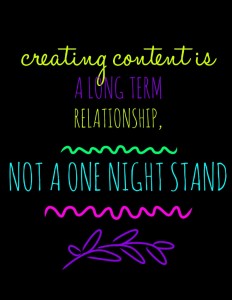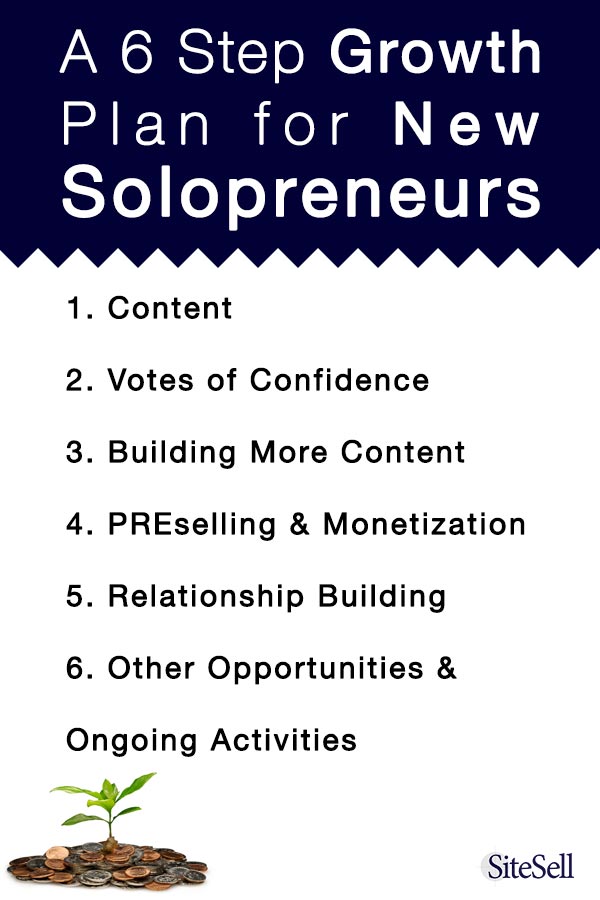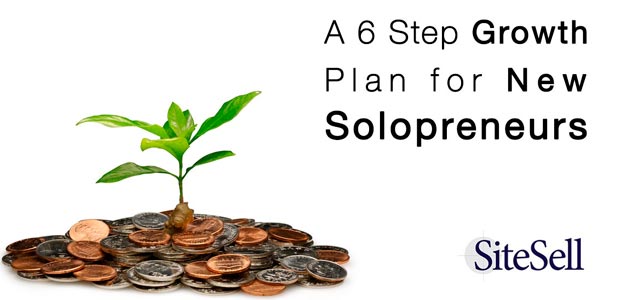If you’ve read our recent article “How to Effectively Balance Job, Family and an Online Business,” you’ll remember how important prioritizing is for any solopreneur – if you’re to keep your sanity!
Building a successful online business can seem like a pretty tall order at times. After all, you’re not only its Chief Executive Officer. You’re in charge of marketing, content development, business development, research, promotional strategies… to name but a few!
In other words, as a solopreneur you get to wear all the hats. That can often be invigorating and inspiring. It can also be overwhelming, intimidating – and exhausting.

Which is why it’s essential to have a plan that maps out a list of priorities, in order of importance. Otherwise, it’s easy to start running around frantically, but without purpose. Too often, you’ll find that your day zips by and you have nothing to show for it. Not a productive use of your valuable time, right?
Do you feel like you’re standing at the bottom of a huge mountain, with too much to learn and remember? You’re not alone. It’s completely normal. There’s such a steep learning curve at the start of an online business that it would be strange not to feel overwhelmed!
The good news is it’s much less likely to happen if you focus on the single most important action step at each stage of your business’ development.
This article outlines a series of priorities your business needs to meet as it grows. It’s not surprising that these priorities fall within SBI!’s proven framework: Content > Traffic > PREsell > Monetize.
Follow this pathway without deviation. Your business will flourish more quickly than you ever thought possible.
Ready? Let’s begin…
Stage 1: Content
Creating quality content will always be your top priority, whether you have one content page or 100, 10 visitors a day or 10,000.
Until you have 20 to 30 pages of quality content, forget everything else.
That’s right – everything.
Sure, other things may serve as a pleasant distraction. Sometimes creating that first surge of material can be tedious.
But these diversions also waste your time. Every moment not dedicated to content creation is a moment that delays:
- the arrival of the Search Engine (SE) spiders
- credible, inbound links which validate your site with the major Search Engines (Google, Bing, and Yahoo!). Without quality content, you’ll find it difficult to get webmasters to “vote” for what you’ve written.
- income generation through the monetization of your site.
The foundation of every business is content. It’s like building a house. No contractor would put up walls, shingle the roof or paint the interior until the foundation is laid. Your business is much the same. If you try “shingling the roof” (i.e., monetizing your site) before you establish the foundation, your efforts will be wasted.
Remember SBI!’s framework?
- You write content (C)
- Content brings the spiders, who bring traffic (T)
- The quality of the content establishes your expertise and builds trust (P)
- Trust increases the likelihood that your visitor will respond positively to your recommendation for a related product or service. (M)

So…
- Do not let yourself be distracted. Have a “singular” focus.
- Put your head down, take a deep breath, and start writing.
- Be a tortoise. Work out how much time you can devote to your site. Use the time wisely.
- Write as much quality content as you can during those hours.
- When you reach 20 – 30 articles (pages), you’re ready to move to Stage 2.
Stage 2: Votes of Confidence
You’ve created 20-30 content pages. Now you need a few high quality inbound links (i.e., links from other websites to yours). They’re important for the SEs to “see” your site as a credible resource.
This becomes your new priority.
But how should you get them?
There was a time when webmasters became caught up in the whole “linking” thing. They spent hours searching for appropriate partners. They joined dozens of link networks. They uploaded databases of linked sites to their websites.
And then, “Penguin” hit.
“Penguin” was a Google algorithm change which was first rolled out in April, 2012. It penalized websites which used manipulative linking techniques. Their aim was to artificially increase a site’s rankings in the SEs.
Penguin’s goal was to make sure people searching for information found high quality content. Sites which used artificial linking techniques found themselves losing rank in the Search Engines.
So the best way to attract inbound links is to “keep it real” – as SBI! has been advising for many years. People naturally want to link to high quality content.
Another important way of attracting these “votes of confidence” is through social channels. For example:
- set up a Facebook Page for your business
- link on your own Facebook Page to articles you’ve written on your site. If they’re good, they will be ‘shared’
- comment on other people’s good quality posts or articles
- reply to messages
- over time, you’ll build a community of people in your niche who will notice when you have a new article, and link to it.
It works similarly with other social platforms. Re-Tweet someone else’s Tweets. Re-Pin pins. Comment on Instagram posts. In time, you’ll find the links will build.
But don’t let it take you too far away from …
Stage 3: Building More Content

You have 30 pages of good content up, and your links are building naturally.
Why is it important to continue creating still more content?
If you were able to write your first 20-30 high quality pages efficiently, your site should be starting to see regular spider activity. Rankings, and traffic, should follow shortly – and those inbound links will help, too!).
Even so, you probably don’t have enough traffic to start monetizing yet.
Don’t be disheartened!
It can be several weeks to a few months before the SEs start driving significant levels of traffic to your site. It takes time for a site to establish itself. That’s the way of the internet, and no new small home based business can escape this reality. You just have to be patient.
So, view this “slow period” as an opportunity.
Yes, really! It’s an opportunity to create more content without the distractions you’ll face once your business begins to build a head of steam.
Using the time to ensure that you have mobile-friendly content is equally critical. SBI!’s “Mobilize It!” takes care of this for you.
There are exceptions to every rule, of course. If your initial pages of content are delivering 100-200 daily visitors, you may want to skip ahead to Stage 4 (see below). You may also want to skip ahead if you’re planning a high-value monetization offering.
Otherwise, return your focus once again to the creation of quality content.
How much, you say? That’s easy: the more, the better.
Remember…
- More content = more traffic, and greater credibility in the “eyes” of the SEs.
- More content = more spontaneous links from other online business owners, who link to enhance the quality of their visitor experience
- More content = more social signals from visitors who “like” and “share” your content
- More content = a more confident and trusting audience, willing to heed your PREselling recommendations
- More content = more monetization options, for example more pages on which to place AdSense ads
Don’t stress yourself. There’s no need to create all your content at once. Remember the tortoise. Take this time to create another 10-30 content pages before moving on to Stage 4.
Stage 4: PREselling & Monetization
“Selling is not what you do to someone. It’s what you do for someone” Zig Ziglar
Tweet This
By now, traffic should be on the rise. Visitors are coming, and better yet, your information is enthralling them!
Here’s where the fun begins.
You have 30-50 pages of quality content, and a few affirming inbound links. You’re ready for the final stage of the SBI! C>T>P>M process: monetizing.
Before you begin, here’s something to consider.
Monetization does not mean dumping a few affiliate links into your site and forgetting them. Done properly, it is a careful, deliberate, and sometimes delicate process.
Your goals are twofold:
Firstly, to match the unique needs or wants of your audience to ideal solutions. This is vital. If the products or services you promote are not what your audience needs, you will not earn income. It’s as simple as that.
How to approach that?
Get into the head / mindset of your visitor. What problems or issues do they have? What unique solutions can you offer? Don’t mistake your needs or interests for theirs. Constantly check out their problems, their desires. Make your offers complement your content and you’ll do well.
There are techniques for approaching this which SBI!’s Action Guide covers in detail. Follow them, and you’ll have a great insight into your potential customers’ world.
Your second goal is to avoid jeopardizing the goodwill that your high quality, customer-focused content is building. Remember: PREsell. Don’t push sales at the expense of content.
And bear in mind that effective monetizing is a constantly evolving process. As your business grows and matures, your customers’ needs will change. As this happens, your offerings should change too.
Check your monetization strategies periodically. You need to be sure you’re still in sync with your target group.
Stage 5: Relationship Building
You’re building new content, you’ve begun to build social relationships, you’ve started to monetize.
What‘s next?
Building more relationships. Because without relationships, your online business is going nowhere.
How?
- Keep your content fresh. SBI! businesses benefit from a process which reformats new content into a blog. That keeps both Search Engines and customers happy.
- Encourage interaction. SBI! sites can make content interactive with “Content 2” (C2) articles. C2 allows site visitors to create their own content about issues they’re particularly interested in. It’s a great way of getting to know what’s on your customer’s mind.
- Keep building social media platforms. Those relationships are critical to building a presence as an authority in your niche.
- Choose one or two good quality blogs, and leave comments. Make sure you have something useful to say. Leaving a comment that says “nice post” doesn’t hack it. Help people out. Provide good quality information.
And then – consider newsletters.
Of course, the number of daily visitors your site receives will be important here. If you have fewer than 100, the Content part of C>T>P>M should remain your primary focus.
The exception is if you’re selling a high-priced product or service. Here, a new subscriber may be worth a lot of money in sales. In that case, it would make sense to send out a newsletter to even a handful of subscribers.
Otherwise, it can feel a little like talking to yourself!
But growing a list of people who are interested enough to subscribe to your newsletter is one of the most profitable ways of developing your business.
So, once you have satisfied the other priorities, start working on this one.
Newsletters need a consistent commitment to extra work. Remember: once you start, it’s difficult to back out. Make sure you schedule time to communicate regularly with your subscribers.
This brings us to…
Stage 6: Other Opportunities & Ongoing Activities
“Deciding what not to do is as important as deciding what to do” Steve Jobs
Tweet This
Let’s recap.
- Your Content foundation is in place
- You have a few inbound links
- Social signals are growing
- Traffic is increasing
- PREselling is a given
- You have started to Monetize your site
- Potential customers have a newsletter to which they can subscribe.
It’s time to investigate some other promotional options.
Some possibilities? How about these:
- joint ventures
- a 5-day mini course
- a free e-book
- Pay-Per-Click campaigns with Google’s AdWords
- high-quality posts in theme-related forums (to build more credibility)
- Google authorship (to build your reputation as a quality content creator)
- to name but a few!
As you investigate other promotional possibilities, keep this in mind…
Few activities leverage your “brand of one” like the creation of new content. Every new article / page drives free traffic, 24/7.
Add a couple of AdSense ads, an appropriate affiliate link or, best of all, a monetizing link to your own product or service. Suddenly, that content page becomes a full-time revenue generator.
Bottom line?
Every day, you should critically approach each task you perform. Your mindset should always be “how will this help build my business?” Ask yourself: “Is my time better focused elsewhere?”
Or more importantly:
“Does this task leverage my business as effectively as the creation of new content?”
Whenever you answer “no” to that question, immediately ask yourself this question… “Why am I doing this instead of creating content?”
Sure, as your business develops, it’s necessary to investigate other promotional activities. But don’t get too wrapped up in pursuing strategies that will provide a minimal payoff at best.
Stay focused on your priorities. Build your business. Don’t sweat the small stuff. Until your business is up and running on its own momentum, think of the return on the investment of your own time.
And always come back to content creation. It’s a priority that will surface again and again.
Want more great tips for growing your solopreneur business? Subscribe to our free newsletter.
And if you haven’t yet gotten your online business off the ground…

Latest posts by Ken Evoy (CEO, SiteSell) (see all)
- Threads vs X (Twitter): The Battle of Titans, Musk vs Zuckerberg - July 13, 2023
-
Part 7: Tai and Generative A.I.
3X Your Productivity - May 18, 2023 -
Part 6: Tai and Generative A.I.
6 Bees and 6 P’s - May 9, 2023


